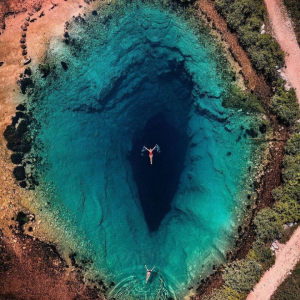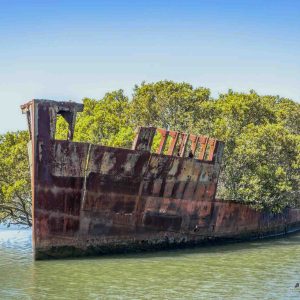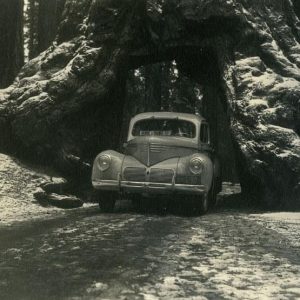Events that seem like out of this world…so rare and so beautiful that you won’t believe they truly exist. Two words – MINDBLOWINGLY AWESOMATIC!
1. Aurora borealis (Northern Lights)
Location: Above the magnetic poles of the northern and southern hemispheres of the Earth. (Polar regions)
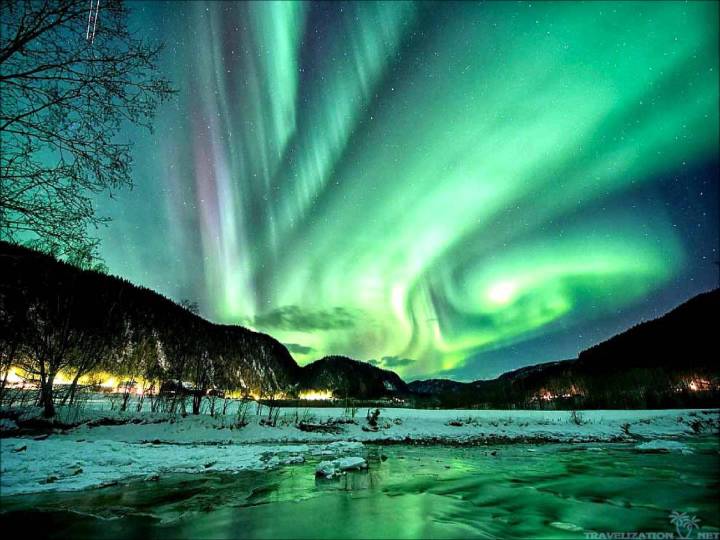
The bright dancing lights of the aurora are actually collisions between electrically charged particles from the sun that enter the earth’s atmosphere. These collisions vary in color due to the type of gas particles that are colliding. The most common auroral color, a pale yellowish-green, is produced by oxygen molecules located about 60 miles above the earth. Rare, all-red auroras are produced by high-altitude oxygen, at heights of up to 200 miles. Nitrogen produces blue or purplish-red aurora. Scientists have learned that in most instances northern and southern auroras are mirror-like images that occur at the same time, with similar shapes and colors. Because the phenomena occurs near the magnetic poles, northern lights have been seen as far south as New Orleans in the western hemisphere, while similar locations in the east never experience the mysterious lights. However the best places to watch the lights (in North America) are in the northwestern parts of Canada, particularly the Yukon, Nunavut, Northwest Territories and Alaska. Auroral displays can also be seen over the southern tip of Greenland and Iceland, the northern coast of Norway and over the coastal waters north of Siberia. Southern auroras are not often seen as they are concentrated in a ring around Antarctica and the southern Indian Ocean.
2. Lenticular Clouds
Location: Can be found anywhere on Earth, provided the conditions are right for its formation

Lenticular clouds, technically known as altocumulus standing lenticularis, are stationary lens-shaped clouds that form at high altitudes, normally aligned at right-angles to the wind direction. Where stable moist air flows over a mountain or a range of mountains, a series of large-scale standing waves may form on the downwind side. Under certain conditions, long strings of lenticular clouds can form, creating a formation known as a wave cloud. Lenticular clouds have been mistaken for UFOs (or “visual cover” for UFOs) because these clouds have a characteristic lens appearance and smooth saucer-like shape.
3. Bioluminescence
Location: Australia – Gippsland Lakes; USA – Manasquan Beach (NJ), Mission Bay, Torrey Pines Beach (San Diego, CA), Cortez (FL); Caribbean – Luminous Lagoon (Jamaica), Mosquito Bay (Puerto Rico), Asia – Halong Bay (Vietnam), Bali (Indonesia), Ton Sai, (Krabi, Thailand), Toyama Bay (Japan); Europe – (Zeebrugge, Belgium), Norfolk (UK), Indian Ocean – Reethi Beach (Maldives)

Bioluminescence can be created in a rare number of environments. It is a glow produced by algal blooms. The blooms carry and support millions of the bioluminescent dinoflagellates. Bioluminescence is used by dinoflagellates as a defense mechanism to escape predators. Bioluminescence can really only be seen in the darkness, so you have to be in a light free zone to witness it. The plankton light up whenever they are disturbed, though only for a moment. The greater the disturbance, the brighter the glow — boats typically create the most intense effects. Numerous species of phytoplankton and certain jelly fishes are known to bioluminesce, and the glow can be seen in oceans worldwide at all times of year. Even though dinoflagellates are single-celled organisms, some of them are large enough to be seen with the naked eye. They wash up on shores and it looks like glitter. Walk in them and your footsteps will glow.
4. Frost Flowers
Location: Anywhere on a cold morning provided the conditions are right.

As beautiful as it is rare, a frost flower is created on autumn or early winter mornings when ice in extremely thin layers is pushed out from the stems of plants or occasionally wood. This extrusion creates wonderful patterns which curl and fold into gorgeous frozen petioles giving this phenomenon both its name and its appearance. As the temperature gets to freezing or below the sap in the stem of the plants will expand. As it does so the outer layer of the stem comes under increasing pressure and microscopically thin cracks, known as linear fissures, begin to form. These will finally give way under the pressure of the sap and split open. Water is continuously being drawn up the plant’s stem while the ground remains unfrozen. It travels up the plants external stem and reaches the split or splits. As it does so, it oozes slowly out and it freezes. Yet more water is coming behind it. This new water reaches the cracks and it too freezes, pushing the previous slither of ice away from the stem. In this manner the amazing ‘petals’ that you see in these pictures are formed.
5. Supercell
Location: Supercells can occur anywhere in the world under the right pre-existing weather conditions, but they are most common in the Great Plains of the United States in an area known as Tornado Alley and in the Tornado Corridor of Argentina, Uruguay and southern Brazil.


The most threatening and deadliest of all thunderstorms, a supercell is characterized by the presence of a mesocyclone: a deep, persistently rotating updraft. For this reason, these storms are sometimes referred to as rotating thunderstorms. Supercells are often isolated from other thunderstorms, and can dominate the local weather up to 32 kilometres (20 mi) away. Supercells can be any size – large or small, low or high topped. They usually produce copious amounts of hail, torrential rainfall, strong winds, and substantial downbursts. Supercells are one of the few types of clouds that typically spawn tornadoes within the mesocyclone, although only 30% or fewer do so.
6. Volcanic Lightning
Location: Volcanic Eruptions

A dirty thunderstorm (also, Volcanic lightning) is a weather phenomenon that is related to the production of lightning in a volcanic plume. A famous image of the phenomenon was photographed by Carlos Gutierrez and occurred in Chile above the Chaiten Volcano. Other instances have been reported above Alaska’s Mount Augustine volcano,and Iceland’s Eyjafjallajökull volcano.Volcanic lightning, the researchers hypothesize, is the result of charge-separation. As positively charged ejecta makes its way skyward, regions of opposite but separated electrical charges take shape. A lightning bolt is nature’s way of balancing the charge distribution. The same thing is thought to happen in regular-old thunderstorms. Smaller eruptions tend to be accompanied by more diminutive storms, which can be difficult to spot through thick clouds of ash. What’s more, lightning activity is highest during the beginning stages of an eruption, making it all the more challenging to capture on film.
7. Finnish Lapland Structures
Location: Finland

Rising eerily from the frozen landscape, these strange shapes look like something from a science-fiction film. But they are here on Earth, frost-covered trees located close to the Arctic Circle, where temperatures can drop as low as -40C. In the dramatic sub-zero conditions, the snow and frost become so thick that everything is covered in a thick blanket. The picture was taken in winter in Finnish Lapland where weather can include sub-freezing temperatures and driving snow.
8. Fire Rainbows
Location: Fire rainbows can only be seen on locations north of 55°N or south of 55°S.

Fire Rainbows are neither fire, nor rainbows, but are so called because of their brilliant pastel colors and flame like appearance. Technically they are known as circumhorizontal arc – an ice halo formed by hexagonal, plate-shaped ice crystals in high level cirrus clouds. The halo is so large that the arc appears parallel to the horizon, hence the name. Brightly colored circumhorizontal arc occur mostly during the summer and between particular latitudes. When the sun is very high in the sky, sunlight entering flat, hexagon shaped ice crystals gets split into individual colors just like in a prism. The conditions required to form a “fire rainbow” is very precise – the sun has to be at an elevation of 58° or greater, there must be high altitude cirrus clouds with plate-shaped ice crystals, and sunlight has to enter the ice crystals at a specific angle. This is why circumhorizontal arc is such a rare phenomenon.
9. Mammatus Clouds
Location: Most commonly found in The United States.

Mammatus is a meteorological term applied to a cellular pattern of pouches hanging underneath the base of a cloud. They are pouch-like cloud structures and a rare example of clouds in sinking air. As updrafts carry precipitation enriched air to the cloud top, upward momentum is lost and the air begins to spread out horizontally, becoming a part of the anvil cloud. Because of its high concentration of precipitation particles (ice crystals and water droplets), the saturated air is heavier than the surrounding air and sinks back towards the earth.The temperature of the subsiding air increases as it descends. However, since heat energy is required to melt and evaporate the precipitation particles contained within the sinking air, the warming produced by the sinking motion is quickly used up in the evaporation of precipitation particles. If more energy is required for evaporation than is generated by the subsidence, the sinking air will be cooler than its surroundings and will continue to sink downward. The subsiding air eventually appears below the cloud base as rounded pouch-like structures called mammatus clouds.
10. Sailing Stones
Location: Little Bonnie Claire Playa in Nevada and most notably Racetrack Playa, Death Valley National Park, California

Sailing stones refer to a geological phenomenon where rocks move and inscribe long tracks along a smooth valley floor without human or animal intervention.These stones can be found on the floor of the playa with long trails behind them. Somehow the stones slide across the playa, cutting a furrow in the sediment as they move. Experiments show that moving of stones requires a rare combination of events. First, the playa fills with water, which must be deep enough to form floating ice during cold winter nights but shallow enough to expose the stones. As nighttime temperatures plummet, the pond freezes to form thin sheets of ‘windowpane’ ice, which must be thin enough to move freely but thick enough to maintain strength. On sunny days, the ice begins to melt and break up into large floating panels, which light winds drive across the playa, pushing rocks in front of them and leaving trails in the soft mud below the surface. Several other theories have been proposed for this phenomena but none have been able to explain it clearly. Some of the stones weigh more than 300 kg. That makes the question: “what powerful force could be moving them?”
11. Light Pillars
Location: Typically seen in polar regions, the vertical columns of light have also been reported to be seen with frigid temperatures at lower latitudes.

Light pillars appear when artificial light or natural light bounces off the facets of flat ice crystals wafting relatively close to the ground.When the light source is close to the ground, the light pillar appears above the floating crystals. When the light comes from the sun or moon, the light pillar can appear beneath them, too, as the light refracts through the crystals. The light can come from the Sun (usually when it is near or even below the horizon) in which case the phenomenon is called a sun pillar or solar pillar. It can also come from the Moon or from terrestrial sources such as streetlights.
12. Morning Glory Clouds
Location: The Morning Glory cloud is a rare meteorological phenomenon occasionally observed in different locations around the world. The southern part of Northern Australia’s Gulf of Carpentaria is the only known location where it can be predicted and observed on a more or less regular basis.

The Morning Glory cloud is a rare meteorological phenomenon consisting of a low-level atmospheric solitary wave and associated cloud. The wave often occurs as an amplitude-ordered series of waves forming bands of roll clouds. A Morning Glory cloud is a roll cloud can be up to 1,000 kilometres (620 mi) long, 1 to 2 kilometres (0.62 to 1.24 mi) high, often only 100 to 200 metres (330 to 660 ft) above the ground. The cloud often travels at the rate of 10 to 20 metres per second. The Morning Glory is often accompanied by sudden wind squalls, intense low-level wind shear, a rapid increase in the vertical displacement of air parcels, and a sharp pressure jump at the surface. Cloud is continuously formed at the leading edge while being eroded at the trailing edge. In the front of the cloud, there is strong vertical motion that transports air up through the cloud and creates the rolling appearance, while the air in the middle and rear of the cloud becomes turbulent and sinks. The cloud quickly dissipates over land where the air is drier.
13. Colored Mountains (Zhangye Landforms)
Location: Zhangye Danxia Landform Geological Park in China and several other places in China.
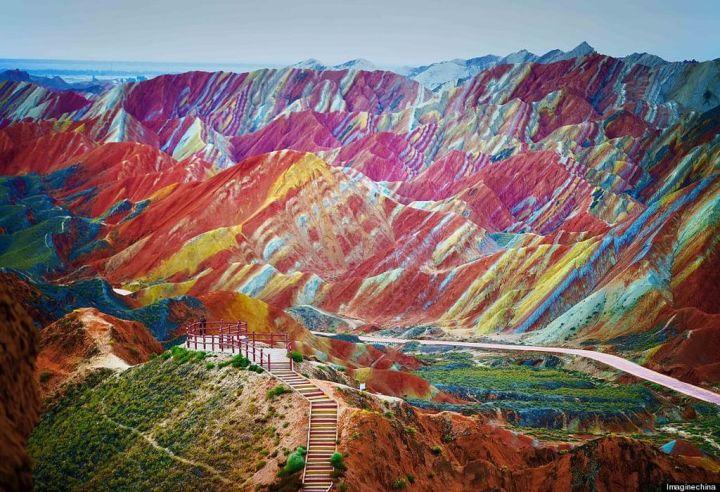
Yes, believe it or not this insane technicolor mountain formation does exist…FOR REAL! Layers of different colored sandstone and minerals were pressed together over 24 million years and then buckled up by tectonic plates. Danxia landform is formed from red-coloured sandstones and conglomerates of largely Cretaceous age.
14. Penitentes
Location: On very high-altitude glaciers, such as those in the Andes mountain, where the air is dry.
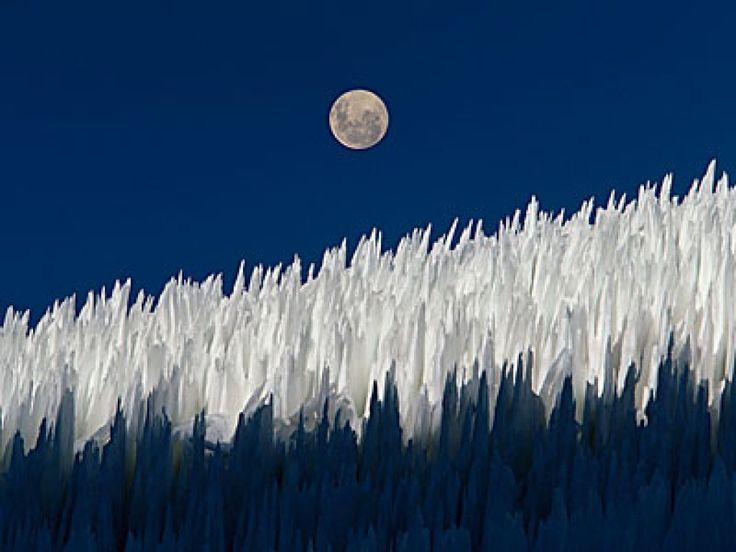
These marvelous structures are tall thin blades of hardened snow or ice closely spaced with the blades oriented towards the general direction of the sun. They usually formed in clusters and range from a few centimetres to 2 meters but penitentes as high as 5 meters has been recorded. These pinnacles of snow or ice grow over all glaciated and snow covered areas in the Dry Andes above 4,000 meters. Penitentes are a common sight in the regions between Argentina and Chile. They form when the sun’s rays turn snow directly into water vapor without melting it first, a process called sublimation. An initially smooth snow surface first develops depressions as some regions randomly sublimate faster than others. The curved surfaces then concentrate sunlight and speed up sublimation in the depressions, leaving the higher points behind as forests of towering spikes.
15. Snow Donuts
Location: Snow, under the right conditions of formation.

Snow donuts are formed when a clump of snow falls off of a cliff or a tree into the snow pack. And if the conditions and temperature are just right, as gravity takes over, it pulls the snow down, and it rolls back on itself. Usually the center collapses and it creates what we call a pinwheel. But when the hole stays open, it creates a shape that resembles a car tire covered with ice, or a gigantic, white Cheerio!
The following conditions are needed for snow rollers to form:
-There must be a relatively thin surface layer of wet, loose snow, with a temperature near the melting point of ice.-Under this thin layer of wet snow there must be a substrate to which the thin surface layer of wet snow will not stick, such as ice or powder snow.-The wind must be strong enough to move the snow rollers, but not strong enough to blow them apart.-Alternatively, gravity can move the snow rollers as when a snowball, such as those that will fall from a tree or cliff, lands on a steep hill and begins to roll down the hill.Because of this last condition, snow rollers are more common in hilly areas. However, the precise nature of the conditions required makes them a very rare phenomenon.
16. Sun Dog
Sun dogs are an atmospheric phenomenon that consists of a pair of bright spots on either side on the Sun, often co-occurring with a luminous ring known as a 22° halo.

Sun dogs are a member of a large family of halos, created by light interacting with ice crystals in the atmosphere. Sun dogs typically appear as two subtly colored patches of light to the left and right of the Sun, approximately 22° distant and at the same elevation above the horizon as the Sun. They can be seen anywhere in the world during any season, but they are not always obvious or bright. Sun dogs are best seen and are most conspicuous when the Sun is close to the horizon. Sun dogs are commonly caused by the refraction of light from plate-shaped hexagonal ice crystals either in high and cold cirrus or cirrostratus clouds or, during very cold weather, drifting in the air at low levels, in which case they are called diamond dust. The crystals act as prisms, bending the light rays passing through them with a minimum deflection of 22°. As the crystals gently float downwards with their large hexagonal faces almost horizontal, sunlight is refracted horizontally, and sun dogs are seen to the left and right of the Sun.
17. Desert Rose
Location: Deserts under the right conditions.

Desert rose is the colloquial name given to rose-like formations of crystal clusters ofgypsum or baryte which include abundant sand grains. The ‘petals’ are crystals flattened on the c crystallographic axis, fanning open in radiating flattened crystal clusters.The rosette crystal habit tends to occur when the crystals form in arid sandy conditions, such as the evaporation of a shallow salt basin. The crystals form a circular array of flat plates, giving the rock a shape similar to a rose blossom. Gypsum roses usually have better defined, sharper edges than baryte roses. The ambient sand that is incorporated into the crystal structure, or otherwise encrusts the crystals, varies with the local environment. If iron oxides are present, the rosettes take on a rustic tone.
18. Brinicles
A brinicle forms beneath sea ice when a flow of extremely cold, saline water is introduced to an area of ocean water, being the undersea equivalent of a hollow stalactite or icicle.


At the time of its creation, a brinicle resembles a pipe of ice reaching down from the underside of a layer of sea ice. Inside the pipe is the supercold, supersaline water being produced by the growth of the sea ice above, accumulated through brine channels. At first, a brinicle is very fragile; its walls are thin and it is largely the constant flow of colder brine that sustains its growth and hinders its melt that would be caused by the contact with the less cold surrounding water. However, as ice accumulates and becomes thicker, the brinicle becomes more stable. A brinicle can, under the proper conditions, reach down to the seafloor.
19. Earthquake Lights
Location: Just before an earthquake.

An earthquake light is an unusual luminous aerial phenomenon that reportedly appears in the sky at or near areas of tectonic stress, seismic activity, or volcanic eruptions. The lights are reported to appear while an earthquake is occurring, although there are reports of lights before or after earthquakes. Many hypotheses have been proposed for the explanation of the phenomenon, but no clear explanation exists as such. For instance, The most recent model suggests that the generation of earthquake lights involves the ionization of oxygen to oxygen anions by breaking of peroxy bonds in some types of rocks by the high stress before and during an earthquake. After the ionisation, the ions travel up through the cracks in the rocks. Once they reach the atmosphere these ions can ionise pockets of air, forming plasma that emits light.
20. Frozen Bubbles
Location: Most commonly located in Abraham Lake, Alberta, Canada.

These natural wonders are made of highly flammable gas methane. The gas – emitted by bacteria after they consume dead organic matter – is fairly harmless, but these bubbles can cause an explosion if lit. The strange phenomena is caused when permafrost in the area begins to thaw out. Organic matter stored in the bottom of the lake begins to thaw out, and microbes decompose it, releasing methane. Methane does not dissolve into the water, and instead forms bubbles that rise to the surface. In summer, the methane bubbles simply rise to the surface and pop to enter the atmosphere. However, when the lake is frozen in the winter, the bubbles become trapped on their way to the surface.
21. The Hessdalen Lights
Location: Hessdalen valley in the municipality of Holtålen in Sør-Trøndelag county, Norway.

The Hessdalen light most often appears as a bright white or yellow light of unknown origin standing or floating above the ground level. Sometimes the light can be seen for more than one hour. There are several other types of unexplained lights observed in the Hessdalen valley. Unusual lights have been reported in the region since the 1940s or earlier. Especially high activity of Hessdalen lights took place from December 1981 until the summer of 1984 when lights were observed 15–20 times per week. The frequency of the lights caused a gathering of numerous tourists staying there overnight to see the phenomenon. Since then, the activity has decreased and now[when?] the lights are observed some 10–20 times per year. Several explanations have been put forward but none seem to provide a clear concept of the phenomenon.
22. Ball Lightning
source: newscientist, text source: wikipedia

Ball lightning is an unexplained atmospheric electrical phenomenon. The term refers to reports of luminous, spherical objects which vary in diameter from pea-sized to several meters. It is usually associated with thunderstorms, but lasts considerably longer than the split-second flash of a lightning bolt. Many early reports say that the ball eventually explodes, sometimes with fatal consequences, leaving behind the odor of sulfur. Many scientific hypotheses about ball lightning have been proposed over the centuries. Scientific data on natural ball lightning are scarce, owing to its infrequency and unpredictability.
